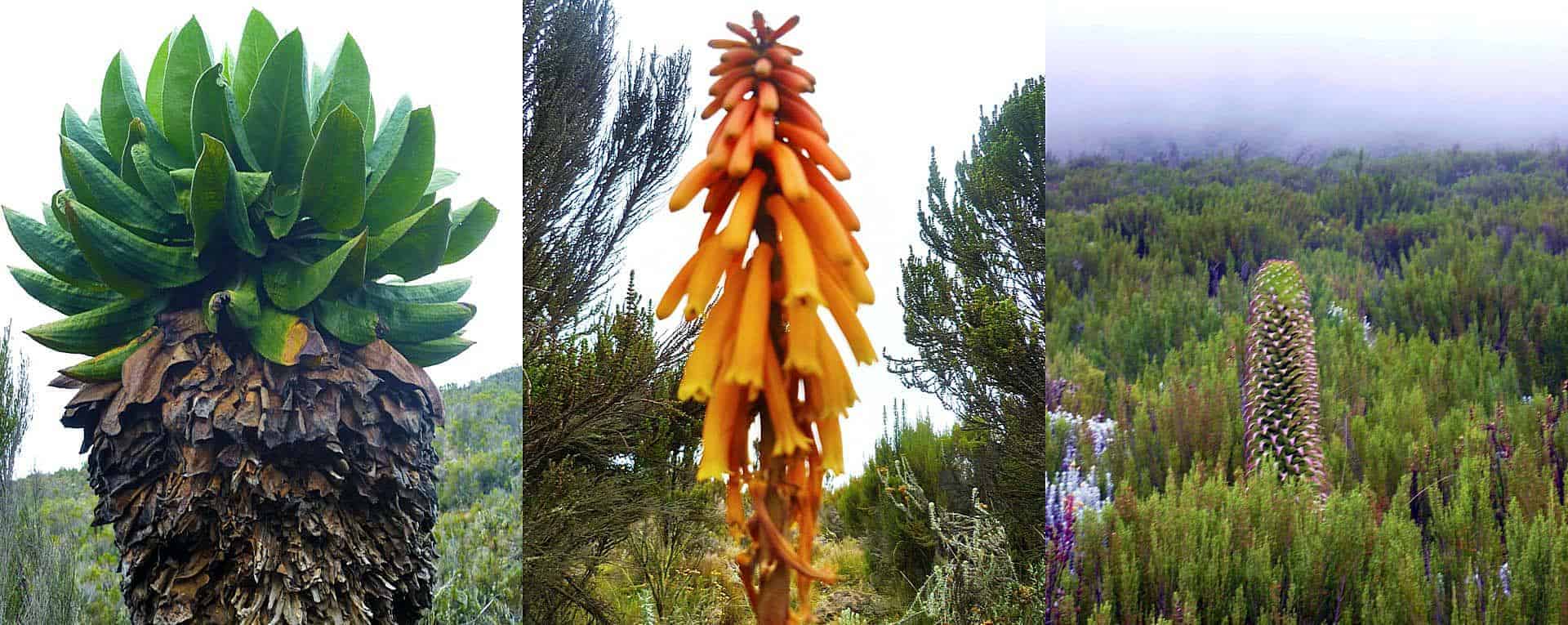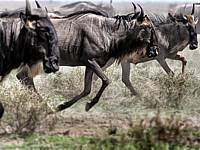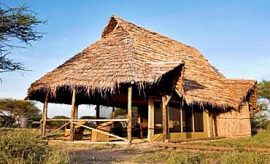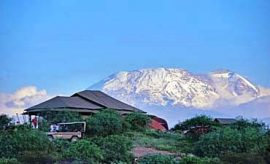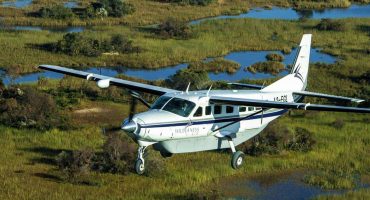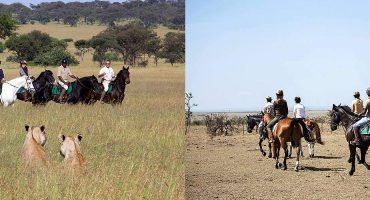FROM TROPICS TO ARCTIC - MOUNT KILIMANJARO ZONES
Zone One -The Lower Countryside Slopes Of Mount Kilimanjaro
The lowest zone on the foothills of Mount Kilimanjaro in Northern Tanzania is thought by many to be the least interesting, since it is settled and under cultivation, offering little in the way of wilderness experience or wildlife encounters. But it has a richness of its own and offers much to the discerning visitor beginning a Kilimanjaro trekking tour with Uhuru Trails by AfricanMecca.From 800 meters to 1800 meters, the rich land, watered from the mountain above, was formerly lowland brush and forest, but has been cleared over centuries to make way for traditional crops of bananas and yams as well as potatoes, beans and maize. Northern and eastern areas are arid and dusty for agriculture and retain something of their former character. Plantations of pine trees for fuel and carbon credits are a more controversial development, but the orderly rows are aesthetically attractive as are the coffee plantations on the southern side of the mountain.
Wild flowers can still be seen here, the poisonous Lantana camara with its pretty heads of tiny pink and yellow flowers spreads everywhere as do many clovers. In front of tangled hedges of clematis and climbing pea, verges of feathery penisetum grass and blue spikes of coleus thrive in the hot sun. You may even see the elephant trunk flower, a beautiful red, green and yellow balsam with a curled tube shaped like an elephant’s trunk, which grows nowhere else in the world.
Chagga settlements intersperse grassland and crops, affording opportunities to learn about the local people. Their goats, cows and chickens also move freely in the area. Farming has caused most wild animals to move higher up into the forest, so expect to see more in the transition belt.
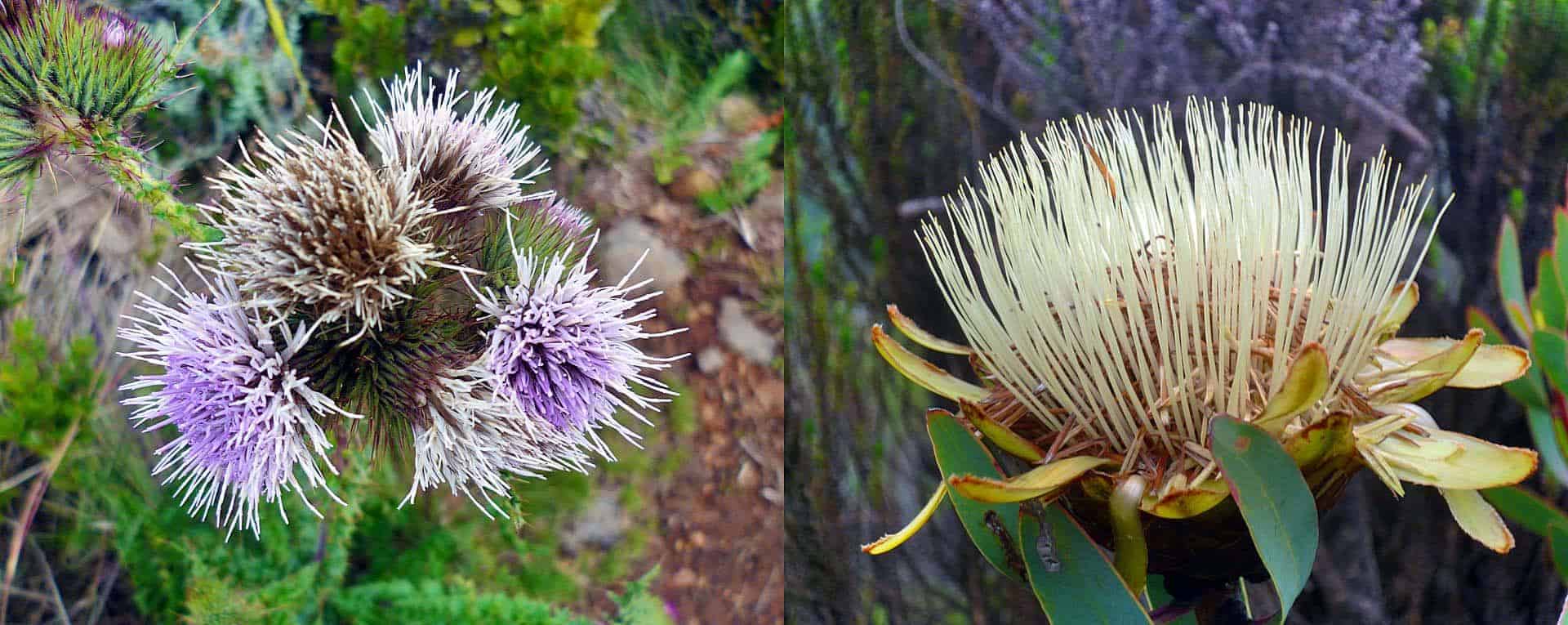
Zone Two - Montane Forests Of Kilimanjaro
Kilimanjaro highlands travel in East Africa is best idealized in the tropical forest zone which starts from 1000 meters to 2800 meters. A number of small mammals, such as hyrax and bush babies venture amongst the crops looking for food, as do many birds, but most retire to the forest for shelter. Bulbul and boubou, cascading their nightingale melodies, and robin chat fill the air with rapture at dawn and dusk.Brilliantly plumaged sunbirds plunge their needle-like curved beaks into the nectar tubes of scented tropical blossoms. Crested turaco flash unexpected scarlet underwings. The tropical montane forest zone of the “Shining Mountain” is rich and beautiful. Exquisite swallowtail butterflies feed on nectar from blood-lilies.
Nocturnal cats including civets and genets venture out at dusk with galago, aardvark and honey badgers, all animals you are more likely to hear than to see. There are shy antelopes from duiker to suni and even elusive leopard in the rainforest, but they are grim to spot. Bush pigs are present too. The north and west slopes have the presence of bigger game opportunities as the wildlife have access from the western plains of Kilimanjaro National Park and Amboseli in southern Kenya. Elephants, giraffes, buffalos and even lions have been spotted. The humid southern forest, wreathed in cloud, absorbs moisture that permeates the lower mountain reaches to irrigate the farmland.
Scented powder-puff flowers of albizia add their heady perfume and veils of bearded lichen hang from tree limbs, dripping onto the mossy forest floor. Humidity is high and nights are cold. Experience a Kilimanjaro hiking safari through this shadowy forest where orchids bloom amongst ferns clustered along green branches, festooned with delicate trails of lemon-scented begonias. Drifts of mimulus and impatiens carpet the spongy forest floor.
The northern woodland is drier with olives and twisted juniper. Colobus monkeys with white capes and tails, and blue monkeys (which are actually black and grey with a tinge shade of blue hair), can be heard as they swing through the overhead canopy of figs and camphor wood, whilst baboons stalk the paths.
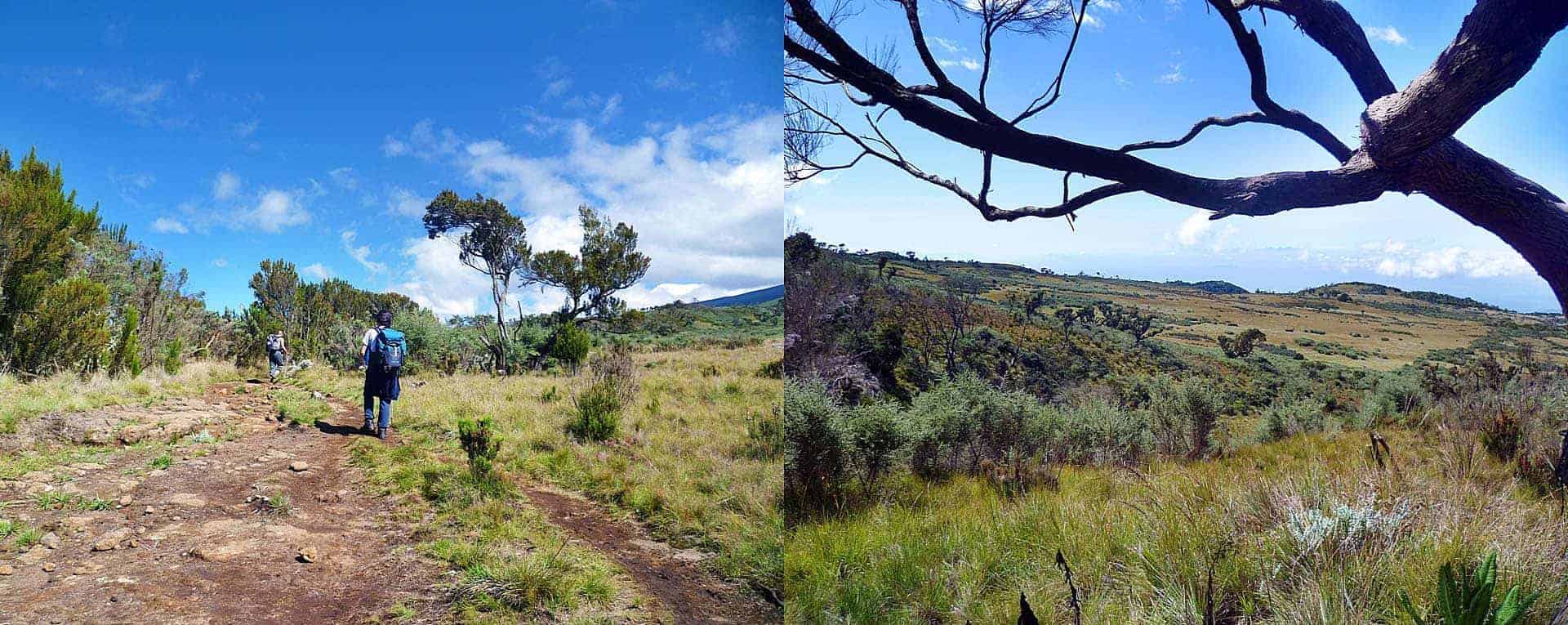
Zone Three - Heathlands and Moorlands Of Kilimanjaro Mountain
In the next transition zone between 2800 meters to 4000 meters, tall, silky heathers grow beside tasseled golden flowers of hypericum. Giant lobelias and groundsel appear in clearings, alien in form, fasciated and weird in outline. Club-like lobelias can reach up to three meters tall, but the groundsel soars to five meters before breaking into terminal clusters of tiny golden daisy flowers. The moorland and heath of the middle zone are drier and cooler than the forest, but the sun will scorch you unpityingly.Even so, daytime mists are common and nights are freezing. Amongst the unbelievable flora, you will find the giant protea, beloved of florists for its dramatic, long-lasting cone shaped blossom. Stretches of grassland are brightened with flowering bulbs in season: red hot poker and gladiolus in particular. Although the moorland is too high for most animals, there have been sightings on Rongai Trek of transitory game from elephants to elands, and rare spotting of canine lions have been seen on Shira Plateau.
Mice and mole-rats are sufficiently abundant to feed highland civets, servals and ultra-mysterious leopards. Amongst Erica species, which range from bell flowers inches tall to gnarled tree heathers ten meters high, gem-like sunbirds dart and hover. Buzzards also hover high in the sky watching for tiny, scurrying mammals in the carpet of alpine flowers, thistles and ornamental grasses. Many of the plants have evolved amazing strategies to shelter their flowers from frost in thick rosettes of waxy or hairy leaves.
Some exude a slime which freezes over the buds, enclosing them in a protective glassy dome. It is a botanists’ paradise, but a fragile one, easily damaged by careless walkers, especially the slippery sedges and low-growing buttercups in the bogs. You will certainly see the opportunist White-necked raven, stalking round the overnight huts expecting tidbits from visitors on their Kilimanjaro climb expedition.
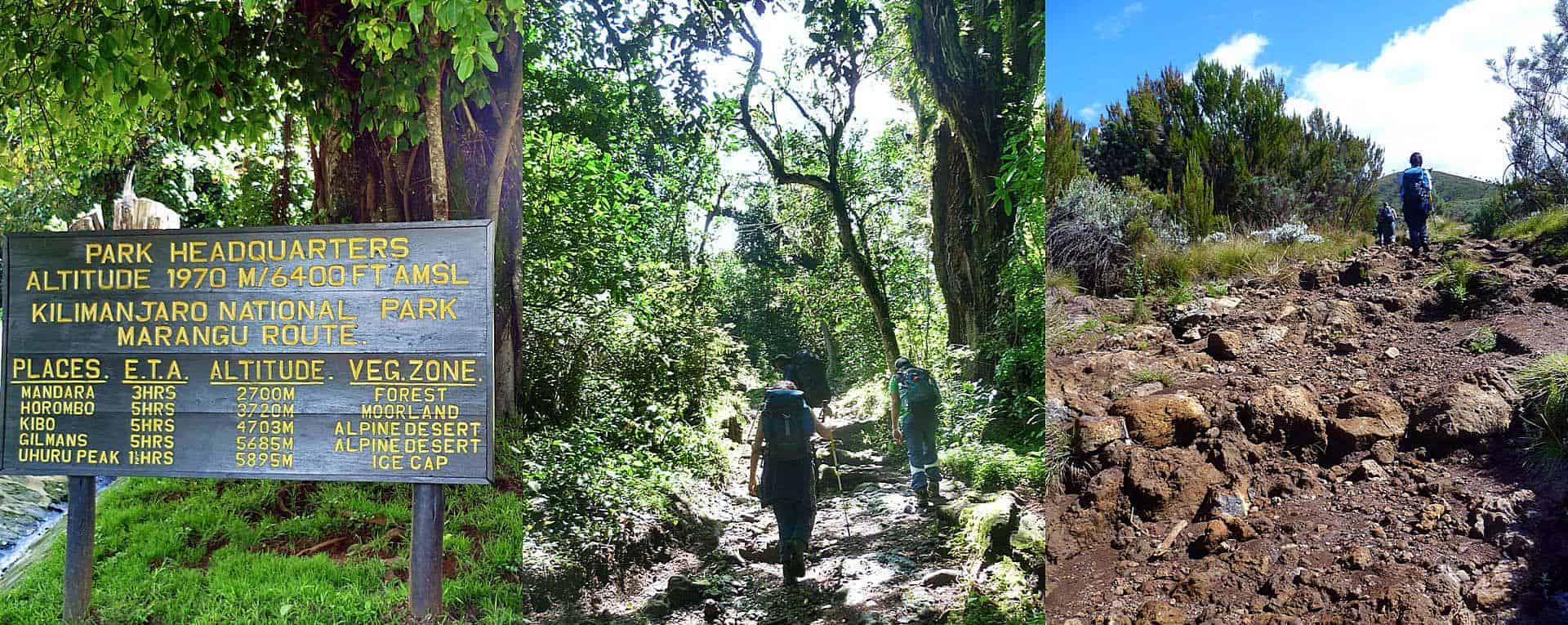
Zone Four - The Towering Alpine Deserts Of Mt. Kilimanjaro
The change from one zone to another is a gradual diminution of plant and animal life, and here at alpine altitudes of 4000 meters to 5000 meters, ground-hugging jewels like sky-blue gentians and tiny golden buttercups gradually peter out in favor of papery everlasting flowers, helichrysums and asters which have fine silvery hairs to insulate them and catch both sun and moisture.Only insects and spiders inhabit the rock crannies, protected from scouring winds that deter other insects, as well as most birds. In a few sheltered spots where soil and moisture can be found, delicate white Alpine arabis cling to life as they do from Lapland to the Alps.
Plants have adapted to the 40 degree fluctuations between summer days and winter nights which causes a process of solifluction when the sparse pockets of soil expand and contract as they alternately freeze and thaw, uprooting less than 60 plant species still struggling to survive, so that the best adapted are more primitive life forms which have no roots at all.
Moss balls tumble about and lichens encrust the rocks in symbiotic relationships between fungus and algae: living paintings in red, green and gold which persist up to the rocks of Kilimanjaro’s saddle area, formed almost three quarters of a million years ago by lava spilling over and between lower volcanic cones. From these great heights, there are superb views of the craters of Mawenzi and the snow-crowned summit Kibo.
When cloud clears from the forest below, you can see Mount Meru rising from the spreading plains more than 4000 meters beneath your feet. This is the totality of the African highland holiday experience. You may also see fabulous wedge-tailed Lammergeyers, spiraling to great heights on thermal currents to drop bones onto the rocks below, cracking them for their succulent marrow. But even they cannot endure the altitude for long and return quickly to more sheltered haunts.
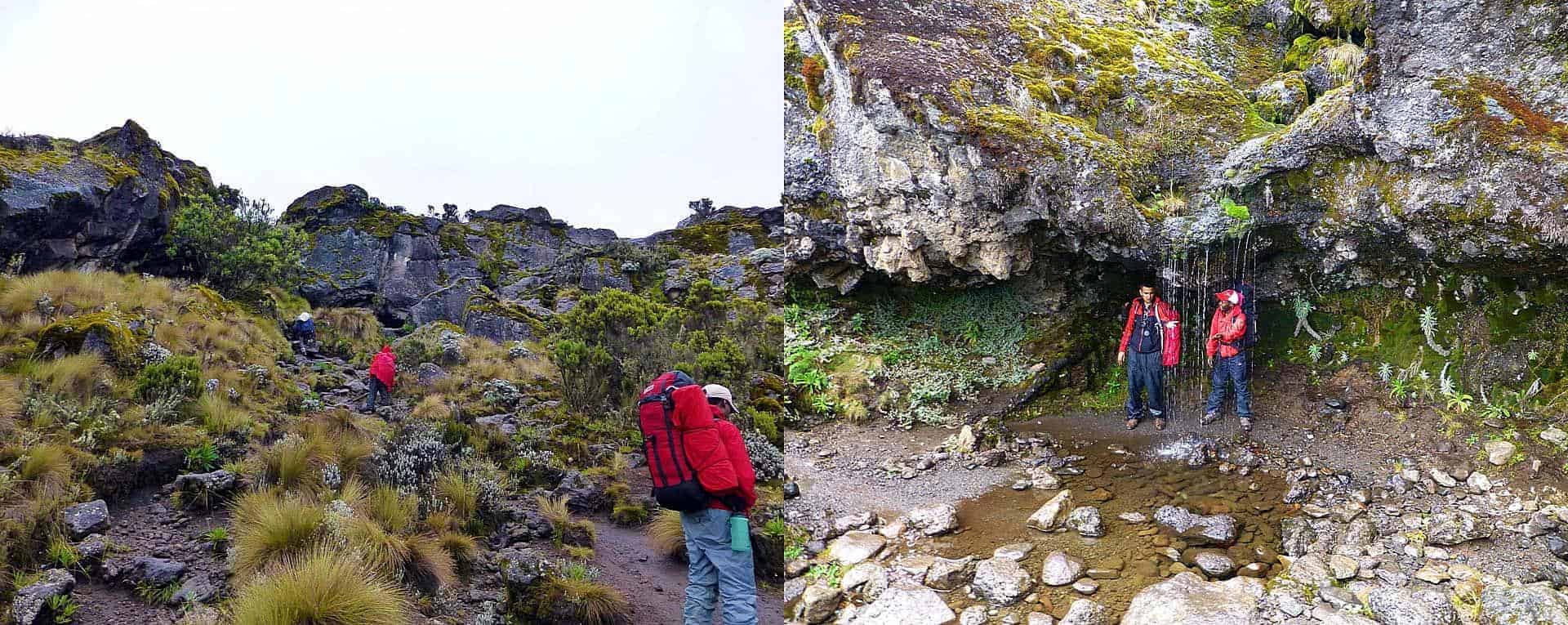
Zone Five - Arctic Ice Cap Summit Of Kilimanjaro
The pinnacle of your Kilimanjaro climbing tour with Uhuru Trails is your approach to the secondary peak, Mawenzi with awe-inspiring rock walls and dykes that demand the expertise of a skilled climber. The dykes are fantastic pinnacles of lava from which softer rocks have eroded. Cross the moonscape of the rock strewn Saddle with its mini parasitic cones to the gentler glaciated slopes of the summit crater Kibo.In spite of the enervating effects of this high altitude from 5000 meters to 5895 meters coupled with the bleak apparent lifelessness of the grandeur before you, your heart will swell with pride as you confront the top of the world. Your last stop before the summit assault will be cold and uncomfortable, but, oh, the glory of the star-studded sky, simultaneously dwarfing your human stature and bestowing a sense of God-hood to match your hardihood and achievement.
On Kibo, there is no free water. It is locked into ice and porous rock. But life still exists in the form of helichrysums near warm, vaporous fumaroles in the cater and in lichens that grow so slowly they are likely to be among the oldest plants on earth, perhaps surviving thousands of years in these cryogenic conditions.
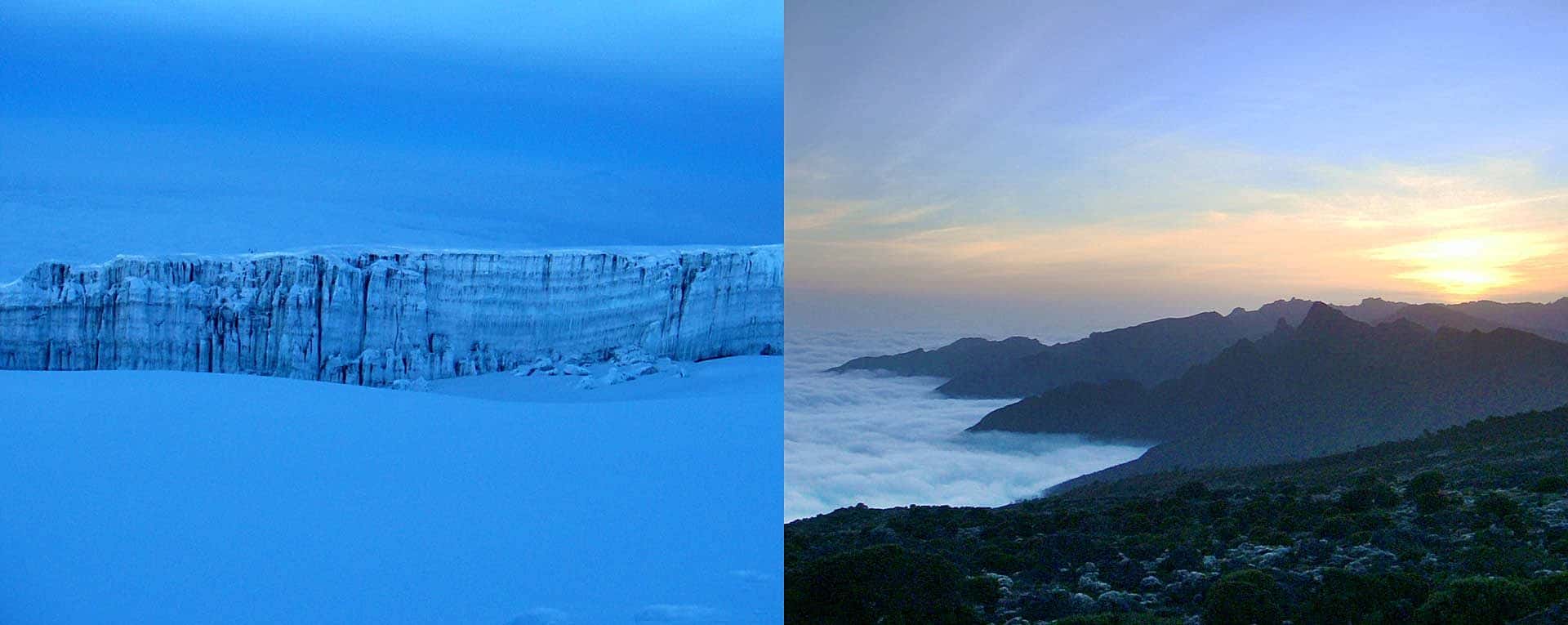
No one can survive in these arctic conditions for long, where searing hot sun by day presages freezing nights. The atmosphere is too thin to filter out radiation and oxygen is less than half that found at sea level. Nonetheless, a German local pastor, Dr. Richard Gustavovich Reusch, found a frozen leopard in the snow in 1926.
Reusch climbed Kili sixty five times during his life on planet earth. Incredibly, wild dogs have been seen historically ascending to the summit of Kilimanjaro. In 1962, five African wild dogs accompanied three explorers (Sir Wilfred Thesiger, Effata Jonathon and George Webb) to the summit, waiting until they had signed the assault book, then slipping away with apocalyptic speed.
Ice cliffs ten meters high are all that remains of the retreating glaciers that once covered Kilimanjaro. Now you can look down 20 meters into the Inner Crater and 120 meters more to the bottom of one of the most perfect ash cones in the world. Yet even here, life triumphs in the form of bacteria in the boiling fumarole vents of a mountain that only seems to be asleep (read more on when is the best time to travel to Kilimanjaro).
Read More +
KILIMANJARO TREK GUIDE- HOME
Uhuru Trails by AfricanMecca is a fresh team name for a long-established partnership between AfricanMecca Safaris and one of our most experienced, dependable and registered team outfitters on Kilimanjaro to provide discerning climbing experiences.
Read More +
KILIMANJARO CLIMB INTRODUCTION
AfricanMecca believes Kilimanjaro is a mountain with attitude. Towering enigmatically like an ethereal island in the sky wreathed in mists, at 5895 meters, it is the highest mountain in Africa and the highest stand-alone mountain in the world.
Read More +
KILIMANJARO CLIMB PRICES
Here you will find prices for various recommended and acclimitized routes for Kilimanjaro including Lemosho, Machame, Rongai, Shira, Umbwe and Marangu. We recommend you customize your private climb based on your preference and group size.
Read More +
TOP 10 REASONS TO CLIMB WITH US
We have 10 great reasons why you should climb with us. The first is a pioneering approach to guiding standards on Mount Kilimanjaro. Uniquely, we offer every trekker his or her own personal support guide (1 GUIDE : 1 CLIMBER RATIO).
Read More +
WHICH KILI ROUTE TO CHOOSE?
There are six approved routes for a Kilimanjaro climb with Uhuru Trails By AfricanMecca, each offering different advantages and drawbacks. Regardless of which route you choose, you need not be a rock climber, superlatively fit or supremely well-equipped.
Read More +
OUR MOUNTAIN FAMILY TEAM
We trust our clients to the care of some of the best experienced mountain guides in the Tanzanian travel industry. Our guide leaders have 100 hundreds of climb experiences in between 10 to 20 years' of the best way to succeed in climbing Kilimanjaro.
Read More +
BEST TIME TO CLIMB KILIMANJARO
One of the best times for a Tanzanian trek vacation on Mount Kilimanjaro is in the warm months of January and February when clear skies afford excellent views of superb scenery, especially from the upper slopes; though, expect some snowfall during this period.
Read More +
UHURU SUMIMIT SUCCESS GUIDE
Trekking to the roof of Africa can be a glorious, triumphant achievement that can color the rest of your life with self-confidence and pride. Or it can be an ordeal or even an abject failure. You need to know exactly what you are letting yourself in for.
Read More +
KILIMANJARO SAFETY CLIMB GUIDE
It must be clearly understood that Mount Kilimanjaro is a dangerous environment where climbers are risking their lives. One person in every thousand (0.1%) will die on the mountain and more than half of these deaths could be preventable.
Read More +
SAFETY EQUIPMENT GUIDE
Kilimanjaro kills those climbers who go beyond their sensible limits. We have an enviable safety record because its leaders do not waste time on technological fixes on high altitude, but get sick and injured trekkers off the mountain without delay.
Read More +
KILI ALTITUDE SICKNESS GUIDE
The general impression is that a climbing tour of Kilimanjaro is an easy mountaineering option, since the 5895 meter mountain has been successfully climbed by hardy children and by octogenarians. It is not. It is a perilous undertaking.
Read More +
FAQ ON KILIMANJARO
Review Frequently Asked Questions for our Kilimanjaro treks. Questions range from custom private climb options, charity climbs, Crater Camp add experience, costs, tipping, a day on a climb, packing list, reducing ecological footprint to combining safari.
Read More +
FIVE ZONES OF KILIMANJARO
Review the 5 geographical, flora and fauna zones of Mount Kilimanjaro. The zones include the lower countryside slopes, montane forests, heathlands and moorlands, the towering alpine deserts and the arctic ice cap summit of the shinning mountain.
Read More +
KILI GEOLOGY, HISTORY & TRIBES
Mount Kilimanjaro, the tallest mountain in Africa, is a unique Tanzanian highland vacation destination: a stand-alone pinnacle which creates its own climate in zones of distinct character, from fluted glacial columns and cathedrals of ice on the summit.
Read More +
GUIDE ON KILIMANJARO PARK
Kilimanjaro, the shining mountain, floats in a wreath of cloud above the vast South Amboseli plains (a.ka the Western Kilimanjaro wilderness), offering an amazingly diverse series of fauna and habitats. It is a superlative destination for trekking.
AFRICANMECCA REVIEWS
What are our Customers saying about us? READ MORE REVIEWS
Loretta and I had a great time on our honeymoon. Simiton, your safari guide in Tanzania was awesome! He was very professional, very accommodating and very knowledgeable. We are already talking about our next trip to Africa!
Loretta and Danny Haag - California, United States
First off, we had the most amazing time ever and wanted to thank you very much. Tanzania proved without a doubt to meet all of our expectations. Every detail was thought of on our trip by AfricanMecca and were are all flawless.
Marcy Burton & Ryan Kerr - Ontario, Canada
We have returned from our African adventure and would like to thank you very much for your part in making this such a wonderful experience. We were lucky enough to time the Great Migration from the Serengeti, which was amazing.
Denise Paterson - Belmont, Australia
Jambo Raza, It was a wonderful experience in Tanzania. Rogers, our guide was superb; knowledgeable, helpful and very friendly. We were treated very well by all your ground team and everything ran smoothly. I enjoyed it all.
Alan Winner, Minnesota, United States
AfricanMecca's professionalism and care understands that what distinguishes Africa is its authenticity, the land, people and wildlife who do not share our world of fashion and fanfare that distinguish so many travel companies today.
Cyril Christo & Marie Wilkinson, Conservation Photographers, Authors & Wildlife Documentary Producers - USA
AfricanMecca Safaris created a remarkable honeymoon tailored to our interests and desires. The quality of service and delivery of experience was unsurpassed. I highly recommend AfricanMecca Safaris to honeymooners, families, or any traveler.
Noorin & Jason Nelson - Maryland, United States
I booked my safari holiday through AfricanMecca. They were the most helpful company I have ever dealt with and I work within the travel industry. I had the most amazing time. The holiday went as clockwork with no hitches anywhere.
Shelley Roberts - Hemel Hempstead, United Kingdom
EAST AFRICA SAFARI BOOKING TRIP IDEA FOR MOUNT KILIMANJARO IN NORTHERN TANZANIA
When visiting Mount Kilimanjaro National Park, we recommend combining it with your Northern Tanzania safari to Tarangire, Lake Manyara, Ngorongoro Crater and Serengeti (wildebeest migration). End your trip with a Swahili cultural tour and beach holiday in Zanzibar.
You may optionally extend out to offbeat parks in Southern and Western Tanzania such as Nyerere (Selous), Ruaha or Katavi ending with a chimpanzee trekking safari at Gombe or Mahale by the relaxing Lake Tanganyika.
MOUNT KILIMANJARO PARK SAFARI & TOUR PLANNING DETAILS
Kickstart Your Safari Planning
ARE YOU PLANNING TO BOOK AN AFRICAN SAFARI TO MOUNT KILIMANJARO IN TANZANIA?
Do You Need Knowledgeable, Experienced & Specialist Guidance For Your Travels In Mount Kilimanjaro ? Let Us Help Plan Your Trip Itinerary Correctly
CONTACT AN AFRICA TRAVEL EXPERT ON MOUNT KILIMANJARO NATIONAL PARKMOUNT KILIMANJARO CAMPS & LODGES
Scroll and view more Mount Kilimanjaro safari accommodations in Tanzania
EXPLORE MORE ON MOUNT KILIMANJARO NATIONAL PARK IN TANZANIA
HAVE YOU VISITED MOUNT KILIMANJARO FOR AN AFRICA SAFARI IN TANZANIA?
Write A Travel Or Tourist Trip Review To Share Your Experiences
WRITE MOUNT KILIMANJARO REVIEWAMS BLOG
VIEW ALL -- 26 October 2017 by AfricanMecca Safaris, in Blog For AfricanMecca Safaris,Safari Planning Blog Posts - AfricanMecca Safaris
Baggage Guidance & Restrictions On Flying Safaris In Africa
Baggage Guidance & Restrictions On Flying Safaris In Africa Published By Afr...READ MORE + - 07 June 2017 by AfricanMecca Safaris, in Blog For AfricanMecca Safaris,Latest Kenya Blog Posts From AfricanMecca Safaris,Safari Planning Blog Posts - AfricanMecca Safaris
Masai Mara Horseback Riding Safari In Kenya With AfricanMecca
Masai Mara Horseback Riding Safari In Kenya Published By AfricanMecca Safaris | ...READ MORE + - 24 March 2017 by AfricanMecca Safaris, in Blog For AfricanMecca Safaris,Safari Planning Blog Posts - AfricanMecca Safaris
Times Square New York Hosts Kenya Tourism Board & Wilderness Safaris Meet Up
Times Square New York Hosts Kenya Tourism Board & Wilderness Safaris Meet Up...READ MORE +

